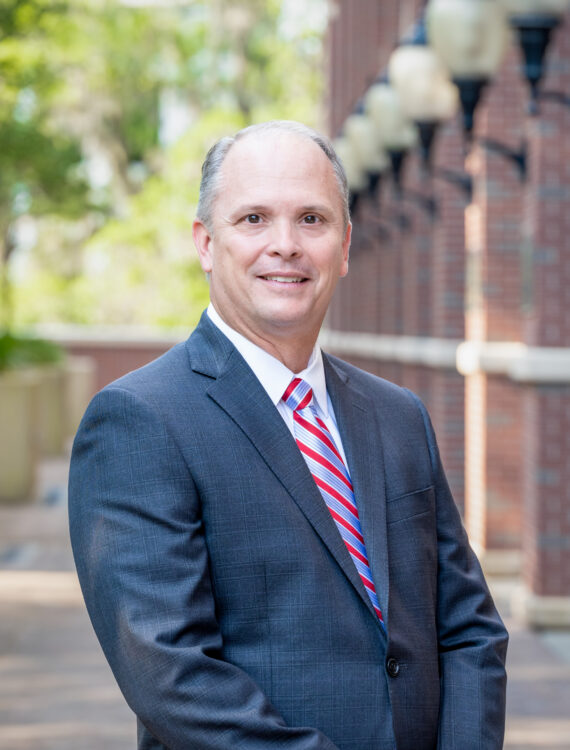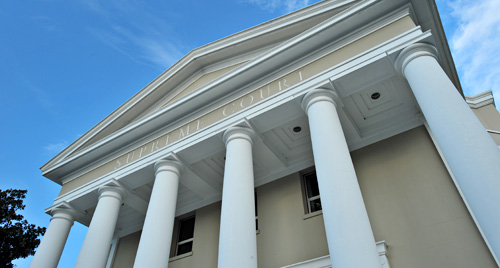Storm study funding short
By Kate Spinner
Published: Monday, September 7, 2009 at 1:00 a.m.
Last Modified: Monday, September 7, 2009 at 12:49 a.m.
Hurricanes cost the nation $11.4 billion and kill about 100 people on average annually in the U.S., yet proposals to help reduce those losses and save lives have been stuck in Congress for three years.
Hurricanes pose the most dangerous, destructive and widespread natural threat to the nation. But research that could lead to better forecasts, easier evacuations and stronger bridges and buildings severely lags in funding compared with other natural disasters.
“Lots of people still die in hurricanes despite how sophisticated our forecasts are,” said Kelvin Droegemeier, co-chairman of the National Science Board’s task force on hurricane science and engineering. “Doing forecasts and sort of throwing them out there isn’t getting the job done.”
Legislators in Florida and other Southern states have pushed since late 2005 for a national hurricane research program modeled after the National Earthquake Hazard Reduction program set up in 1977. The effort would cost from $75 million to $235 million.
Though the price is modest compared with damage from hurricanes, the legislation has been smothered by competing interests, such as health care reform, and political moves to tack on controversial measures.
Insiders say resistance from a building industry wary that research could lead to more regulations is another factor.
Scientists, safe building advocates, insurance industry groups and emergency managers are growing frustrated. They stressed the need for the program at a Senate committee hearing this summer, but the committee has yet to act.
“Urgent wouldn’t be an overstatement of the need to pass this legislation,” said Frank Nutter, president of the Reinsurance Association of America. “It would be a mistake to wait until we had another major event before this legislation was actively considered.”
The earthquake model
The earthquake program helped set design standards for highway overpasses that likely kept the 1994 Northridge Earthquake from being a bigger disaster. The quake struck near Los Angeles, killing 72 people and causing about $20 billion in damage.
“While we lost some freeway overpasses in Northridge, we didn’t lose anywhere near as many as could have happened,” said Robert Olson, a California-based hazard mitigation consultant. “Had there been no attention to the earthquake risk in California by anyone, it would have been seriously worse and part of that can be attributed to the research of the federal agencies.”
Olson relies on federally funded earthquake research to help communities prepare disaster plans.
Funding for day-to-day observation, data collection and forecasting for hurricanes and earthquakes is on roughly equal footing, ranging from $150 million to $200 million a year.
But the focus that leads to understanding how the disasters occur and their effects on communities, homes and infrastructure, is far different. That funding comes from the National Science Foundation, mostly to universities.
Earthquake researchers receive about eight times more than hurricane researchers, although both disasters pose enormous threats.
“I guess envy is one way to say it, but the people in the hurricane field have always looked at how much funding goes to earthquakes,” said associate Florida State University geography professor Jay Baker, who studies how people react to evacuation orders. “Hurricanes are at least as big a threat as earthquakes.”
The National Science Board, which governs the foundation and makes policy recommendations to the president and Congress, cited a “critical need” for a hurricane research program in 2007. It recommended $313 million for research.
The program would link meteorologists with engineers, social scientists and ecologists to study hurricanes as a societal and environmental problem, not just a weather threat.
“There really isn’t a unified research plan for both the federal government and academia to address the issues of hurricane vulnerability on the U.S. coastline the way there is for the earthquake hazard,” said Gordon Wells, program manager at the Center for Space Research at the University of Texas at Austin.
Wells, who also serves as science adviser for Texas emergency management, urged quick passage of the bill at a recent hearing of the Senate committee on Commerce, Science and Transportation.
Bigger impact
Hurricanes cause more damage and kill more people than any other type of natural disaster in the U.S. They also cause the most financial damage.
Of the nation’s top 10 most expensive natural disasters, in terms of Federal Emergency Management Agency relief, nine were hurricanes or tropical storms.
Hurricane Katrina tops the list, followed by the Northridge Earthquake.
The National Hurricane Center estimated that total damage from Katrina, including insurance claims, exceeded $80 billion, with more than 1,800 deaths.
Between 2002 and 2007, hurricanes and tropical storms killed more than 2,000 people and cost the nation upward of $180 billion in losses, according to the National Science Foundation.
Insurers expect annual hurricane losses to double in the next decade, primarily because people continue to build on the coast. Already, roughly half the U.S. population lives in a coastal county.
Along the east coast and the Gulf of Mexico — at risk of Atlantic hurricanes yearly — coastal property values add up to $9 trillion. Roughly $2.4 trillion of that exposure is in Florida.
Nutter told senators that research would support better planning to help communities adapt to hurricane threats and avoid building in risky places.
Such planning works for earthquakes, especially with regard to building codes, said David Applegate, a federal senior science adviser for earthquake and geologic hazards.
He pointed to a recent study by the Multihazard Mitigation Council showing savings of nearly $4 in FEMA disaster relief for ever $1 spent on reducing a community’s vulnerability to natural disasters.
Competing priorities
Hot-button topics from the economy to war and real estate are garnering more attention than the hurricane research program, even from lawmakers supporting this year’s bills in Congress.
“We deal as legislators, unfortunately, with a world of competing priorities,” said U.S. Rep. Debbie Wasserman Schultz, D-Weston, co-sponsor of the House bill introduced in January. Reviving the economy is at the forefront, she said.
It is unclear whether the bill will make it out of the Senate committee or even generate more discussion this year. It was introduced in July.
“The focus when the Senate gets back is largely going to be health care,” said Bryan Gulley, spokesman for Sen. Bill Nelson, a Florida Democrat.
Max Mayfield, who headed the National Hurricane Center from 2000 to 2007, said the program will remain moribund without stronger leadership.
“There has not been the political will,” Mayfield said, recalling conversations dating back to Hurricane Andrew in 1992 about the need for the program. “You’d think that the Gulf and Atlantic and coastal states would be able to get together and make this happen.”
Leslie Chapman Henderson, president and CEO of the Federal Alliance for Safe Homes, an advocacy group for disaster-resistant building, said opposition from builders concerned it will lead to higher home costs is another issue.
“We need to put the money behind windstorm research so we can end the dispute forever whether or not it works, whether or not it’s affordable and whether or not it’s necessary,” she said.












